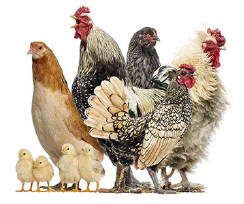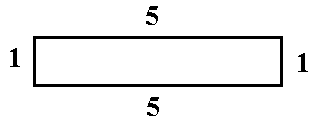This problem solving activity has a measurement focus.

He buys 12 metres of fencing wire.
What is the largest area run that he can make for his chickens?
What if Henry has 60 metres of fencing?
- Explain the relationship between the area and perimeter of rectangles.
- Use a table to solve a problem.
- Devise and use problem solving strategies to explore situations mathematically (guess and check, be systematic, make a table, make a drawing).
This problem requires students to calculate the perimeter and ares of rectangles, and to make comparisons between the area of different-sized areas. In the process, students should discover that the maximum area of a rectangle is obtained when the rectangle is a square.
The problem solving strategies employed by students might include drawing a diagram (in order to ‘see’ how the dimensions of a rectangle of fixed perimeter relate to each other), making a table (in order to compare calculations easily) and being systematic (to make the table entries easier to compare).
- Copymaster of the problem (English)
- Copymaster of the problem (Māori)
- Cm cubes, squared paper
- A piece of string that measures 12m in length
The Problem
Henry wants to make a rectangular chicken run at the back of the house. He buys 12 metres of fencing wire. What is the largest area run that he can make for his chickens?
What if Henry has 60 metres of fencing?
Teaching Sequence
- Introduce the problem with a piece of string 12m long. Ask 4 students to make a rectangle with the string. Discuss its perimeter, how they would calculate its area, and what units would be used to record both quantities (m and m2). Ask another 4 students to make another rectangle – estimate whether the area would be greater or smaller that the first one.
- Read the problem to the class.
- Brainstorm ways to solve the problem eg. use equipment (squared paper, cm cubes)
- As the students work, ask questions to focus their thinking on working systematically and looking for the relationship between the perimeter and area.
What can you tell me about that rectangle?
How are you keeping track of the rectangles that you are making?
How do you know that you have found all the possible rectangles?
What is the difference between perimeter and area in general terms?
What is the difference between the perimeter and area of the run you have created? - Share findings. Encourage the students to make statements about the area and perimeter of the shapes that they have found. Discuss ways to record the measurements to make it easier to see the relationship (table).
- Pose the second part of the problem.
- Before they begin working on the problem, remind them to think about ways of working systematically.
- Share solutions.
- Encourage the students to make statements about the relationship between perimeter and the rectangle with the largest area.
Extension
Repeat the problem above with 14 metres of fencing.
Solution
Calculate the area of a number of rectangles and then choose the dimensions that give the largest area.
For example: If Henry's chicken run has these dimensions the area is 1 x 5 = 5 square metres.
If Henry's chicken run is 2 x 4 metres, the area is 8 square metres.
If the side lengths are all 3 metres, the area is 3 x 3 = 9 square metres.
Hence the maximum area is 9 square metres.
Second part of problem:
Henry must do considerably more calculations. A table is the clearest way to show these.
width | length | area |
(metres) | (metres) | (square metres) |
1 | 29 | 29 |
2 | 28 | 56 |
3 | 27 | 81 |
4 | 26 | 104 |
5 | 25 | 125 |
6 | 24 | 144 |
7 | 23 | 161 |
8 | 22 | 176 |
9 | 21 | 189 |
10 | 20 | 200 |
11 | 19 | 209 |
12 | 18 | 216 |
13 | 17 | 221 |
14 | 16 | 224 |
15 | 15 | 225 |
From the table we see that Henry’s largest chicken run has area 225 square metres.
Solution to the Extension
Students might notice that the biggest area in the two examples above occurs when the rectangle is a square. Is this always the case?
Let Henry try the 14 metre fencing option.
width | length | area |
(metres) | (metres) | (square metres) |
1 | 6 | 6 |
2 | 5 | 10 |
3 | 4 | 12 |
3.5 | 3.5 | 12.25 |
? | ? | ? |
? | ? | ? |
Henry’s table now uses decimal side lengths and adds in the square case as well. Here the square is again the best option.
This might cause students to question whether decimals instead of whole numbers give a bigger area.
If so, extend Henry’s first table to include decimal lengths.
Surprisingly the square always turns out to have the biggest area. The reason behind this can be proved at Level 7 or 8.